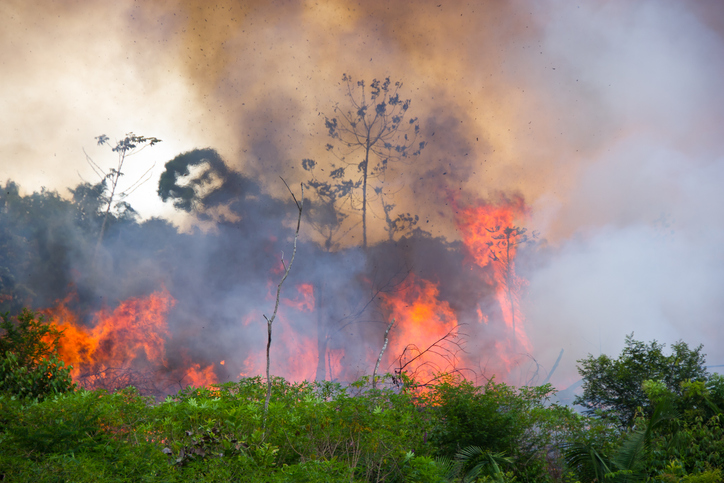
September 25, 2019, by Nasreen Suleman
Amazon fires – the damage to the climate
The Amazon forest has literally been hot news recently. Not only has satellite data from the Brazilian National Space Agency (INPE) shown a significant increase in deforestation in 2019 compared to 2018, it also showed that the forest fire frequency in 2019 is at its highest since 2010. Geertje van der Heijden, Assistant Professor in the School of Geography, has visited and studied the Amazon forest and explains why there is such an outcry about the loss of the Amazon forest.
Consisting of 670 million hectares of forest, the Amazon is the largest tropical forest worldwide. Deforestation of the Amazon forests has been a major concern for decades, as these forests are incredibly important in our fight again climate change. The Amazon forest captures and stores about 25% of the carbon dioxide produced by human activities. The increasing levels of carbon dioxide in the atmosphere is the main cause of global warming. Without the Amazon forest, carbon dioxide concentrations in the atmosphere would be considerably higher than they are today, a sobering thought given the current climate emergency!
By clearing and burning vast amounts of tropical forest, the carbon stored within the vegetation is released as carbon dioxide back to the atmosphere. Deforestation in tropical areas is mainly driven by global economic growth, particularly due to the unprecedented demand for meat, palm oil and soy in the developed world. This leads to economic pressures to fell and burn forested areas to make room for agricultural land, cattle-ranching and mining.
Deforested land is often subsequently burned as this helps to return the nutrients held within the vegetation to the soil to promote crop growth creating the fires which have been covered in the news recently. However, several reports have suggested that the worst of the fires this year is still to come as many of the areas contributing to the recent peak in deforestation have not been burned yet.
The pressure to increase production to meet global demands means that tropical forests are replaced by agricultural land or grasslands for cattle grazing. These vegetation types store a lot less carbon compared to tropical forests. Consequently, the carbon dioxide released by cutting and burning of these forests stays in the atmosphere, contributing to worldwide climate change.
What may be the solution? A recent report from the Human Rights Watch has indicated that a significant proportion of the deforestation in the Amazon is driven by criminal gangs, who illegally clear the forest. This suggests that strict policies on reducing deforestation and increasing reforestation, including firm enforcement of these policies, are needed to save the Amazon forest and keep climate change within limits.
But we should also not forget that we also play an indirect role in the destruction of the Amazon forests. By eating less meat, buying local produce and rainforest certified products, amongst other things, we can all contribute a little to help save tropical forests worldwide, and fight climate change at the same time.
No comments yet, fill out a comment to be the first


Leave a Reply